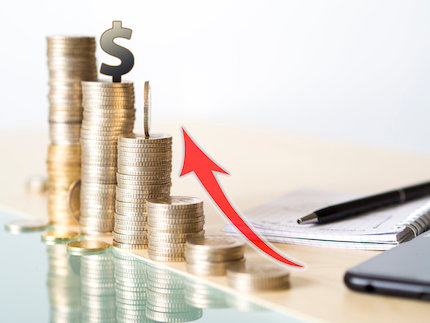High inflation has become a driving force in our lives. It’s challenging to invest for income and keep up with inflation, especially outside of commodity-focused investments.
We have to take an extra step to ferret out investments that will perform well while inflation stays high. Meanwhile, the Federal Reserve will need higher interest rates to combat rising prices.
One category of income stocks offers the potential to grow your income stream, even as the Fed tries to fight inflation by raising rates…

Since the prices of goods and services started to increase quickly last year, the Fed has been reluctant to raise interest rates. Remember when the Fed thought inflation was “transitory?” It was wrong, and now the only path to slow inflation will be for the central bank to jack up interest rates – which it started doing in April.
Chairman Jerome Powell has said he will back interest rate increases until inflation stabilizes, and prices start to fall.
Look for the Fed Funds Rate to increase by 0.25% to 0.50% increments, to reach somewhere between 2.0% and 2.5% by sometime in 2023.
Rising rates mean more interest expense for borrowers and higher interest income for lenders. However, most companies that make loans do so with borrowed funds, meaning they face higher income but also higher costs.
Companies like banks and finance REITs may see higher profits from higher interest rates, but they live on the interest rate spread, and that business model can run into challenges. Simply put, these types of stocks are not a sure thing in a period of rising interest rates.
To invest for rising rates, dive into Business Development Companies (BDCs). The rules under which a BDC operates make them ideal for this period of time. Two factors give this category of financial company an edge.
First, BDC rules limit how much debt a company can issue. A BDC can have debt of more than two times equity; higher-quality BDCs keep debt at 1.0 to 1.5 times equity. As a result, a large portion of a BDC’s loan portfolio (the loans it makes to clients) are backed by non-interest-bearing equity.
Second, on the lending side, BDCs put out loans that are almost 100% floating rate. As interest rates increase, BDC customer loan rates will also increase, and the majority of the gain in interest income will end up as net interest income (NII).
A BDC must pay out at least 90% of NII as dividends to investors by law. As a result, as interest rates go up, dividend rates will increase – as long as a BDC is well managed, at least. Lately, I have seen regular dividend increases out of the BDC sector and a number of the companies declaring added special bonus dividends.
With that said, here are a couple of my favorite BDC stocks:
Over the last year, Main Street Capital (MAIN) increased its regular monthly dividend twice, for a total increase of 4.9%. For the previous two quarters, Main Street Capital declared supplemental dividends of $0.10 and $0.075, respectively. For its regular dividend rate, the stock yields 6.5%.
In November, Hercules Capital (HTGC) increased its regular quarterly dividend by 3.1%, to $0.33 per share. In addition, Hercules has paid supplemental dividends of $0.02 to $0.08 almost every quarter since the fourth quarter of 2018. The company has already announced a $0.15 supplemental dividend to be paid every quarter in 2022. With the supplement, HTGC now yields more than 11%.
BDC share prices have not been immune to the recent stock market decline. Share values in the sector peaked around April 20. The lower prices now make the shares and yields even more attractive. In the case of high-yield investments, buying low gives an immediate payout of a great forward yield.
It’s why I track several BDCs in my high-yield, low-risk income portfolio, The Dividend Hunter. Today is the best time in 22 years to get in and load up on more high-yield BDCs. Click here for information about how to access my full list.





